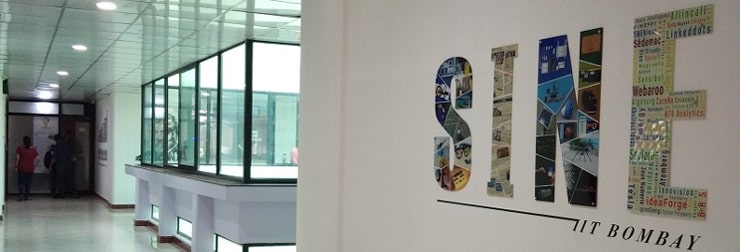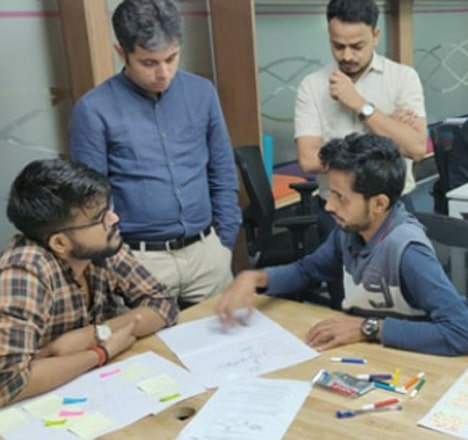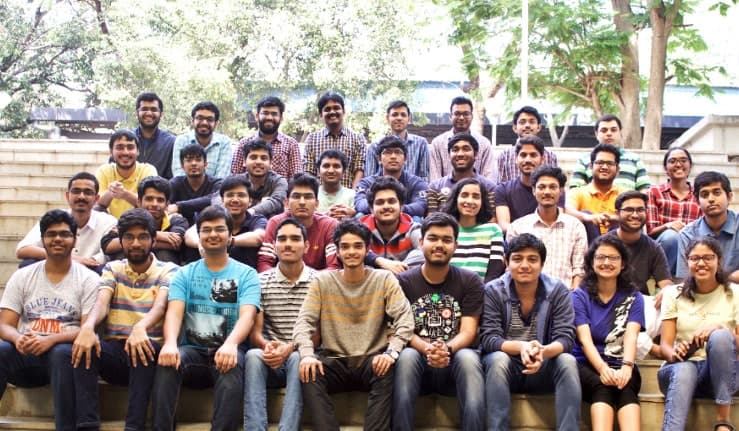Overseas Case: Indian Institute of Technology Bombay (India)
Enhancing Innovation in India: The Entrepreneurship and Research Ecosystem at IIT Bombay
IIT Bombay is a nationally and internationally regarded institution that nurtures the brightest talents in the country. Dr. Milind Atrey, a Professor at the Department of Mechanical Engineering at IIT Bombay talks about his role as Dean (Research & Development) and the research and start-up ecosystem at IIT Bombay, which fosters young innovative minds to develop pivotal technologies.
Abstract
Located in Mumbai, India, the Indian Institute of Technology Bombay (IIT Bombay) is a prestigious public university regarded worldwide as a leader in the field of engineering education and research. It attracts students and researchers of outstanding caliber from across the country for its undergraduate and graduate programs.
IIT Bombay was founded with the mission to create an ambience in which new ideas, research, and scholarships flourish. The Society for Innovation and Entrepreneurship (SINE) at IIT Bombay does exactly that, by fostering entrepreneurship and nurturing tech start-ups. It provides support for technology-based entrepreneurship and facilitates the conversion of research activity into entrepreneurial ventures.
The Desai Sethi School for Entrepreneurship (DSSE) at IIT Bombay also trains aspiring entrepreneurs through structured mentoring programs.
Interviewee’s Bio

Dr. Milind Atrey is a Professor at the Department of Mechanical Engineering at IIT Bombay with a specialization in thermal engineering. Dr. Atrey has worked at IIT Bombay for 17 years, where he first arrived as a PhD scholar. After completion of his PhD, he worked as a researcher at institutes across the world, including Oxford Instruments, UK and Department of Atomic Energy, Government of India. After 14 years of industry and research experience, in 2005, Dr. Atrey switched to teaching through his role at IIT Bombay. He has also served as Professor-in-Charge of SINE, and is currently serving as the Dean of Research and Development at IIT Bombay.
The research ecosystem at IIT Bombay

IIT Bombay has given rise to talented entrepreneurs and researchers ever since its foundation (Image courtesy: IIT Bombay)
At IIT Bombay, there are a multitude of students and young researchers with a common goal of advancing technological research. Thus, research remains an important aspect of the institute, despite its popularity stemming from its undergraduate programs. Of the 12,000 young researchers in the institute, many are enrolled in postgraduate and doctoral programs, with significant contributions to the research and development within the institute.
Dr. Atrey mentions that newly enrolled doctoral research students are guided from Day 1, by being granted ample time and the ability to choose the research supervisor they would like to work with, upon gauging the environment they will be working in—a choice that researchers in other institutes are often not provided with.
As Dean (R&D: Research and Development), Dr. Atrey ensures that budding researchers have access to some of the most advanced equipment and technology to support their research projects. However, access to high quality infrastructure is not a sole indicator of a successful research career. An ecosystem encouraging students and young researchers towards research and innovation is necessary, and professors at IIT Bombay encourage them to meet with successful researchers and alumni from different countries, who often choose to start their own research centers at IIT Bombay from scratch.
Researchers who graduate from IIT Bombay: How they are different
Generally, the consensus among researchers enrolled in PhD programs is that their career trajectory cannot go beyond academia and research. This is not entirely true, since in other countries, there are multiple private research companies allowing researchers to explore a career beyond conventional roles.
At IIT Bombay, students as young as 23 often enroll in PhD programs and have a broader perspective regarding their career goals by the time they finish.
With the expansion of private research companies and industries in India, Dr. Atrey is confident that in the near future, PhD graduates from IIT Bombay will be recruited by these companies in the same way undergraduate students are currently recruited.
Funding modalities for research via collaborations at IIT Bombay
Among all IITs in India, IIT Bombay is considered to be one of the foremost, owing to its status as an Institute of Eminence. Therefore, it does not have trouble acquiring reasonable funding from external agencies. Funding is primarily received from government agencies such as the Department of Science and Technology, the Department of Biotechnology, and the Ministry of Education, who understand the value of research outputs produced at IIT Bombay.
As an example, the Indian Space Research Organization (ISRO) has various collaborations with IIT Bombay for the development of new space-related technologies. Similarly, the Ministry of Petroleum, Oil and Gas has also expressed interest in working with the institute. Dr. Atrey rightfully stresses that technologies require significant investments of resources and time from professors and researchers. That too can usually lead to a proof of concept at best, termed as technology readiness level (TRL) at IIT Bombay. However, in order to develop a technology in its entirety, collaborations with players in the industry is a promising way forward.
Two decades ago, most manufacturing and technology companies were not interested in investing in academic institutes. Now, as Dean (R&D), Dr. Atrey points out that companies such as Siemens, TATA, and Mahindra, and software giants like Google and Facebook are keen on collaborating with IIT Bombay for multiple projects.
These collaborations have increased particularly since the focus has shifted on India becoming self-sufficient with respect to technological developments. Various industries also seek out professors who are experts in respective domains to receive expert advice in the form of consulting services on specific projects.
Owing to sponsored and consultancy projects, IIT Bombay receives an average of INR 300 Crore per annum. Industry contributes around 15-20% of the total funding. Government contribution makes up the remaining 80% of funding.
The role of collaborations in promoting interdisciplinary research at IIT Bombay
Collaborations with industries significantly promote interdisciplinary research at IIT Bombay. When a company approaches the institute, the Dean (R&D)’s Office ensures that relevant points of contact from various departments, such as the mechanical, civil, or chemical engineering departments, are included in discussions regarding the objectives of the collaborative project.
Interested faculty members are encouraged to work together on the project, which results in an interdisciplinary approach—much more effective at problem solving.
The rise of new Centres of Excellence at IIT Bombay, such as the Centres of Excellence for Nanotechnology, Digital Healthcare, Artificial Intelligence, and Machine Data Analytics are all based on interdisciplinary research with researchers from different fields working together.
Key activities at IIT Bombay: The role of Dean R&D’s Office
As Dean (R&D), Dr. Atrey encourages other professors to step out of their comfort zones, adopt an entrepreneurial approach, obtain patent protection for upcoming technologies, and help young researchers with start-up innovation projects. Previously, professors across the institute were hesitant about patenting technology, since they firmly believe that new information should be free of cost. Over time, they have understood the value of patenting technologies and using these to invest in start-ups.
The initiation of projects resulting from IIT Bombay’s collaborations with industries is crucial for the development of new projects that focus on technologies. As Dean (R&D), Dr. Atrey’s office primarily focuses on research management for these projects.
All aspects of research management—proposal approval, contract finalization, accounts, recruitment, and intellectual property (IP) management—are conducted online. IIT Bombay has an intranet portal where all these activities are recorded. Currently, the Dean (R&D)’s Office is integrating this software with SAP-ERP system to make it more robust.
Other activities include providing a resource-rich environment to new professors who come to the institute with the aim to develop their own research laboratories.
The new professors are promising researchers and faculty from across the world who are at the pinnacle in their respective domains. To sustain their enthusiasm, the institute provides them with seed grants to fund their research requirements. In addition, along with inventors, the Dean (R&D)’s Office is responsible for securing IP protection, such as patents, for technologies developed at IIT Bombay.
The Dean R&D’s Office creates an annual brochure which compiles information on the latest developments and technologies resulting from research in the institute. Along with webinars, they use this marketing collateral to reach out to industries to propose collaborative projects.
The Dean R&D’s Office also arranges internal conferences where researchers and faculty interact with industry partners, share perspectives, and exchange their research work.
The start-up culture at IIT Bombay
Over time, students and young researchers across India have become increasingly interested in developing new technologies and founding their own companies. They can benefit substantially from IIT Bombay’s minor degree in entrepreneurship. Through this degree, they can observe innovation projects and new start-ups in the institute, along with the procedures including securing IP rights for technologies, marketing, communication, and securing funding. Around 10% of the students become entrepreneurs.
According to Dr. Atrey, entrepreneurship is one of the fields where these researchers feel challenged in every aspect of business development, finance, next-generation technology, resource management etc.
IIT Bombay also encourages women to explore the world of entrepreneurship and refute the notion that it is a male-dominated space.
SINE at IIT Bombay: How to get involved
Researchers who are interested in working at SINE must have a concrete idea for a new technology, develop its proof of concept, and assemble a team that is passionate about working on this idea.
In addition, the proposed idea must be related to technology. Students and young researchers at SINE receive funding up to Rs. 25 lakhs for their projects, and are provided with office space, resources, and access to the entire institute’s technology ecosystem, including alumni and professors who mentor them from time to time. What’s more, they are able to demonstrate their new technology to the world via events such as Tech Fest and E-Summit and through various events organized by E-Cell. This could help them increase their visibility, since real-world venture capitalists often attend these events to invest in promising start-ups.
 SINE at IIT Bombay, which fosters entrepreneurship and nurtures new start-ups by students (Image courtesy: SINE, IIT Bombay)
SINE at IIT Bombay, which fosters entrepreneurship and nurtures new start-ups by students (Image courtesy: SINE, IIT Bombay)
Contributions to SINE
During his tenure as Professor-in-Charge at SINE, Dr. Atrey supported young researchers to develop their technology by providing them with adequate resources and mentorship. He connected SINE with departments and professors, whereby it became integrated in the fabric of IIT Bombay’s innovation culture.
SINE and DSSE: Popularity and reception

Professors mentoring entrepreneurial students at DSSE (Image courtesy: IIT Bombay)
Students and young researchers in general are more inclined to learn by working on projects which require a hands-on approach, compared to classroom teaching. At the DSSE, this hands-on approach is encouraged.
The overall R&D and entrepreneurship ecosystem has encouraged the involvement of students and young researchers in many interesting projects. As an example, a race car developed by a group of students and researchers at IIT Bombay bagged various awards at international competitions. The development of this car required inputs from multiple domains of engineering, such as electrical, mechanical, and civil engineering. The ‘Ideas program’ is also a student-initiated program, which helps first-year students and researchers with various skills such as soldering, 3D printing, product assembly, and data acquisition.
These projects come to life when interested young researchers are provided with the correct resources, which they can access at SINE and DSSE. Therefore, these two establishments continue to be popular among these researchers.
Moreover, SINE has supported the incubation of approximately 175 start-ups till date. Last year alone, IIT Bombay filed 250 IP applications.
The institute has systems and processes in place to enable researchers to protect IP generated from each high-quality research and entrepreneurial activity. Some successful start-ups include Atomberg, a company promoting energy efficient technologies which has its roots in IIT Bombay. Another company incubated at this institute, ideaForge, developed into a successful drone development company, helping border security forces with surveillance requirements.
-

A single-seater electric race car developed with efforts from over 60 students from mechanical and electrical divisions, at IIT Bombay. The racing team (captured in the image) participated with this car in the Formula Student 2014 Racing Competition held in UK (Image courtesy: IIT Bombay)
-

Students and researchers who were a part of the IIT Bombay Student Satellite Program (Image courtesy: IIT Bombay)
Future prospects for researchers and innovators at IIT Bombay
Dr. Atrey stresses that industries in India are increasingly inclined to invest in technology that is developed in India. As a result, they are beginning to identify Indian researchers’ work, and are likely to either hire them or collaborate with them for joint projects.
The greater the amount of funding researchers receive from industries, the higher is the likelihood of commercializing and expanding their research for practical applications that can benefit society.
He believes that the development of a TRL booster mechanism within the IIT Bombay campus could help researchers expand their research to reach a large scale and commercialize it. This kind of translational research center in IIT Bombay in the future could be a boon for entrepreneurs and researchers.
Dr. Atrey adds that going ahead, collaborating with students from management, commerce, and finance backgrounds can vastly improve the skills of students and young researchers at IIT Bombay, who are not proficient beyond their knowledge of technology. Their work should also increase social impact, which requires vast knowledge of management, design, and humanities.
Recommendations and parting remarks
Dr. Atrey believes that a student or a budding researcher must choose a career in research only if he or she is passionate, and not because of a lack of other options.
The professors may continue to work on research problems which have direct relevance to the society today. They should also work with various organizations, institutes, industries, or start-ups to ensure that such solutions reach the society at large.
Interview date: February 2022
Interview cooperation: Cactus Communications
